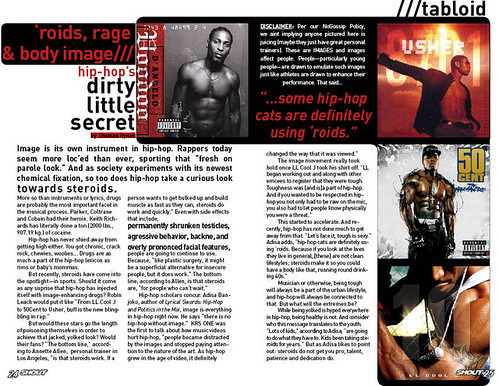SHOUT Best of 2005: Steriods in Hip-Hop

By Thomas Hynes
Image is its own instrument in hip-hop. Rappers today seem more loc'ed than ever, sporting that "fresh on parole look." And as society experiments with its newest chemical fixation, so too does hip-hop take a curious look towards steroids.
Like instruments or lyrics, drugs are an important facet in the musical process. Parker, Coltrane and Cobain had their heroin. Keith Richards has literally done a ton (2000 lbs., 907.19 kg.) of cocaine. You have to fail a urinalysis to even get signed at some labels.
Hip-hop has never shied away from getting high either. You got chronic, crack rock, hare-on, blunts, chewies, woolies... Drugs are as much a part of the hip-hop lexicon as rims or babymammasmmas.
Recently, steroids have come into the spotlight—in sports. Should it come as a surprise that hip-hop has injected itself with image-enhancing drugs? Robin Leach would put it like "From LL Cool J to 50Cent to Usher, buff is the new bling-bling in rap."
CLICK HERE FOR ENTIRE STORY


<< Home